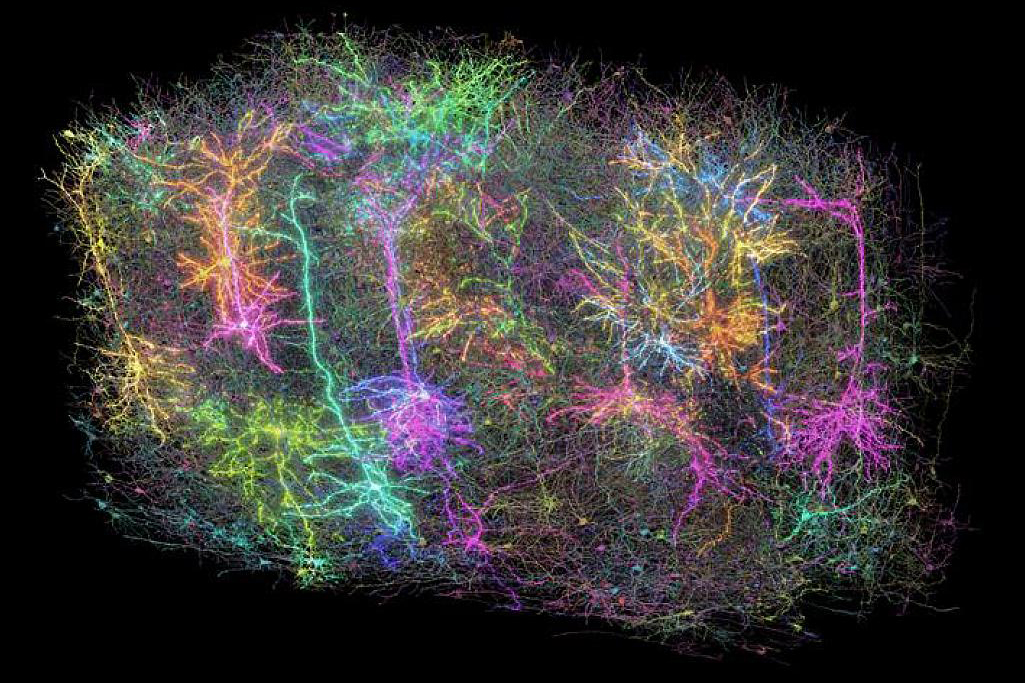New Insights Into How the Brain Processes Visual Information

In a groundbreaking advance in neuroscience, researchers have successfully mapped the intricate connections between hundreds of thousands of neurons within a minuscule section of the mouse brain, focusing particularly on its role in visual processing. This study not only unveils new information regarding how the brain interprets and reconstructs the visual images we perceive, but also emphasizes the complexity underlying these processes.
Conducted by the Machine Intelligence from Cortical Networks (MICrONS) Consortium and supported by the National Institutes of Healths Brain Research Through Advancing Innovative Neurotechnologies (BRAIN) Initiative, this research sheds light on the fundamental mechanisms of information processing in the brain, which consists of approximately 86 billion neurons forming trillions of connections. The secrets of how our brains enable us to think, feel, and act lie within the intricate wiring and electrical signaling that occurs within milliseconds.
The researchers concentrated their efforts on a remarkably small area of the mouse brainjust one cubic millimeter, comparable in size to a grain of sand. This tiny structure was examined for its connections and firing patterns when exposed to visual stimuli, leading to a series of results that were published in a collection of eight papers in the prestigious journals Nature and Nature Methods on April 9, 2025.
To investigate how neurons fire in response to visual input, scientists employed a method that involved showing video clips to a mouse while simultaneously monitoring its neuronal activity through light emissions. By utilizing this technique, they successfully recorded the firing patterns of approximately 76,000 neurons, providing an extensive dataset for further analysis.
In order to construct a detailed map of the neuronal connections in this tiny area, the team painstakingly prepared nearly 28,000 ultra-thin slices of brain tissue. These slices were then imaged using advanced electron microscopy, requiring a labor-intensive process of stitching the images together to create a cohesive representation of the neural network. This intricate work was further enhanced by months of tracing connections through deep learning artificial intelligence algorithms, coupled with both manual and automated proofreading processes.
The comprehensive mapping revealed that this small region of the mouse brain contains an astounding four kilometers of axons, the long fibers through which nerve cells convey signals to one another. These axons interconnect to form more than half a billion synapses across over 200,000 cells, incorporating a variety of neuron types along with supportive glial cells. Notably, the research established that the pattern of connectivity can serve as a crucial identifier for different cell types, a task that can be challenging when relying solely on cellular morphology.
Moreover, predictive models using deep learning were developed and verified to correlate neuronal activity with physical connectivity in the mapped structure. As a result, this research presents the most comprehensive dataset to date linking brain architecture with neuronal function in a living mammal. The findings illustrate not only how the brain processes visual information but also highlight the underlying similarities in the general blueprint of the brain cortex across different mammalian species, from mice to humans.
Dr. John Ngai, the director of the BRAIN Initiative, remarked on the significance of these findings, stating, While the current findings focus on a tiny fraction of the brain, they reveal the complex connections between the cells and show how those connections are wired to produce functional responses. This information, which was previously beyond our reach, could help us understand how the brain functions normally and offer a guide to what goes wrong as the result of various disorders or injuries.














